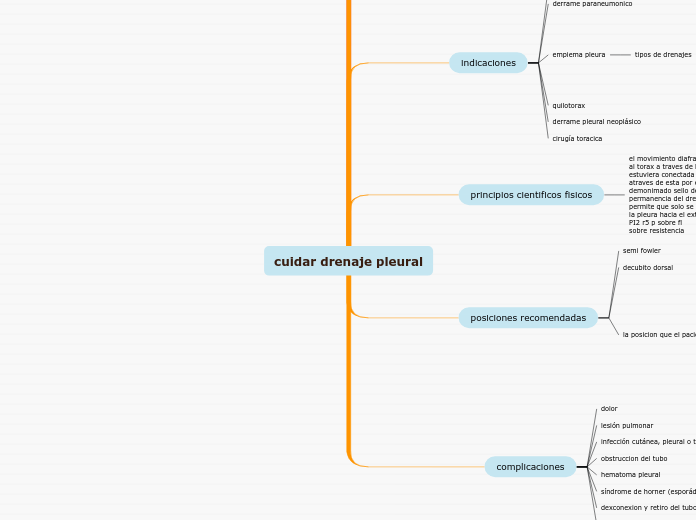av karla muñoz för 4 årar sedan
629
cuidar drenaje pleural

av karla muñoz för 4 årar sedan
629

Mer av detta

To name your story, you have to think about the overall message and what you want your audience to understand from the story. Also, make it relevant and easy to remember.
pinzado del dren para levantar o trasladar al paciente
observar y registrar cantidad y carateristicas del liquido
cambio de trampas de agua
verificacion de conexion de tubos
valoración continua del paciente
medir lo drenado
de aire
no aspirativo
aspirativo
a tres tubos
desechable
The middle of the story is where you add layers of complications that will lead to the end. Reveal more about the character's journey. Did their personality go through changes? How did they overcome the challenges? And as you build up the story’s central conflict, make it more personal to that character. Also, from the middle act, you have to lead into the final act.
favorecer la dinámica respiratoria
There wouldn't be any tension and excitement in your story if there weren't any obstacles in your character's way.
facilitar la reexpancion pulmonar
Your character(s) need(s) motivation in order to solve the challenge(s).
eliminar el exceso de liquido
Each story has a main character and that character usually needs to solve a problem or challenge. The character's challenge is the one that creates tension throughout the story.
In the beginning of the story (or the exposition), you will need to introduce the setting and characters. You might also want to introduce the main conflict. This part of the story is important because it gives the reader necessary background information and maybe even a first insight into a character’s personality.
The setting (time & place) of a story can change throughout the plot.
Sensory details include sight, sound, touch, smell, and taste. These details are important because they create depth in your setting.
See a few examples below:
The weather is an important element in your story because it can highly influence the ambiance and the mood of the characters.
lobulos
The most affected character is the main character. Write down here if he/she is affected by these weather conditions in any way. For example, if they lost a family member or their home during a hurricane, etc.
bronquiolos
Does your story include catastrophic weather? See a few suggestions below or add your own:
- hurricane, earthquake, storm, etc
The time of the story can also change. It can describe the event of a single day or can include an entire year's plot. Anyway, don't forget to mention it.
Characters are essential to a good story. Usually, the protagonist(s) is/are the most affected by the plot. Introduce a character by focusing on their actions, interests, and occupation, as the physical appearance doesn't make a difference in most cases.
Type in the name of your character.
lairnge
Which traits best describe the character's personality? Choose more if necessary:
nariz
Choose the type of your chacter: